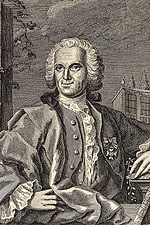 American paleontologist Edward Drinker Cope, died on 12 Apr 1897. Cope is best remembered for his rivalry with O.C. Marsh, often referred to as the Great Bone Wars. These two antagonists shared a lot in common: a fierce sense of competition, unbounded arrogance and a deep driving force that led them to unbelievable lengths to outdo each other. Cope led many great expeditions into the American West and was prolific in the naming of dinosaur species. Cope was also an ichthyologist, an evolutionist, and a founder of the Neo-Lamarckian school of thought.
American paleontologist Edward Drinker Cope, died on 12 Apr 1897. Cope is best remembered for his rivalry with O.C. Marsh, often referred to as the Great Bone Wars. These two antagonists shared a lot in common: a fierce sense of competition, unbounded arrogance and a deep driving force that led them to unbelievable lengths to outdo each other. Cope led many great expeditions into the American West and was prolific in the naming of dinosaur species. Cope was also an ichthyologist, an evolutionist, and a founder of the Neo-Lamarckian school of thought.
But enough of the boring stuff, here's a story that really reveals the character of good old EDC:
What at is a Tyrannosaurus rex? A Dalmatian? An amoeba? When a new species is discovered, scientists must explain to other scientists what it is and what it looks like. So the first thing they do is choose a holotype specimen, this is an example of the new species that will forever define it. Usually it is the first example of the species found. For example, the holotype for T. rex was collected by Barnum Brown in 1902 and is housed at the Carnegie Museum of Natural History in Pittsburgh, Pennsylvania. It is important to remember that a holotype is usually the first example of a new species and it is not necessarily the best or typical example (although ideally it should be). Sometimes when a new species is found and the holotype named, there are only very poor or fragmentary examples available. But it is the practice that even if a better specimen is subsequently found, the holotype is not superseded. But back to our story now, which began back in 1735 with Swedish botanist named Carolus Linnaeus. Linnaeus was fascinated by the diversity of life around him and became obsessed with categorizing it. This is very difficult to do since there are millions of species in the world but Linnaeus went about it in a very systematic way. He devised a hierarchical system for categorizing plants, animals and minerals. Interestingly, he named, described and classified human beings as a part of this system. He named humans Homo sapiens, Latin for man and wise. The concept of a holotype had not been invented yet but the humble Linneaus did consider himself to be the best example of Homo sapiens.
But back to our story now, which began back in 1735 with Swedish botanist named Carolus Linnaeus. Linnaeus was fascinated by the diversity of life around him and became obsessed with categorizing it. This is very difficult to do since there are millions of species in the world but Linnaeus went about it in a very systematic way. He devised a hierarchical system for categorizing plants, animals and minerals. Interestingly, he named, described and classified human beings as a part of this system. He named humans Homo sapiens, Latin for man and wise. The concept of a holotype had not been invented yet but the humble Linneaus did consider himself to be the best example of Homo sapiens.
Then in 1897, an equally humble scientist, Edward Drinker Cope died. In his will, Cope had a final request: that his remains be used as the holotype specimen for Homo sapiens. However, Cope’s dream did not materialize. His brain was saved and preserved in a jar for future study at the Anthropometric Society. But unfortunately, when his skeleton was stripped and cleaned, taxonomists found evidence of incipient syphilis in Cope's bones, a discovery that led his suceedors to deem his remains “unsuitable” to be the type specimen for humanity. His bones were discreetly filed away and perhaps even conveniently ‘lost’ for almost 100 years.
Then in 1991, while working on a story, National Geographic photographer Louie Psihoyos discovered Cope's bones stored at the Museum of Archaeology and Anthropology at the University of Pennsylvania. Psihoyos borrowed the bones to use in his story and while out in the Western United States, he showed the bones to palaeontologist Robert Bakker who was a great admirer of Cope. Bakker began a mission to fulfill Cope’s last request: that his remains be used designated the type specimen of Homo sapiens. Bakker published his description in the Journal of the Wyoming Geological Society.
Unfortunately, Bakker and Psihoyo's efforts were not successful and Cope's remains are unlikely to receive official status for a variety of reasons: the standards for type specimens are very strict and complex and not only do Cope’s bones bear marks of syphilis, they have also suffered damage from their travels: his skull has been dropped, broken and even repaired.
To make the situation more complicated, in 1959, another palaeontologist wrote a paper declaring Carolus Linneaus the holotype of Homo sapiens, especially as his body is well-preserved in the Cathedral in Uppsala, Sweden. Well since nobody can agree, the job still remains open and there is no official holotype for humanity.





Comments